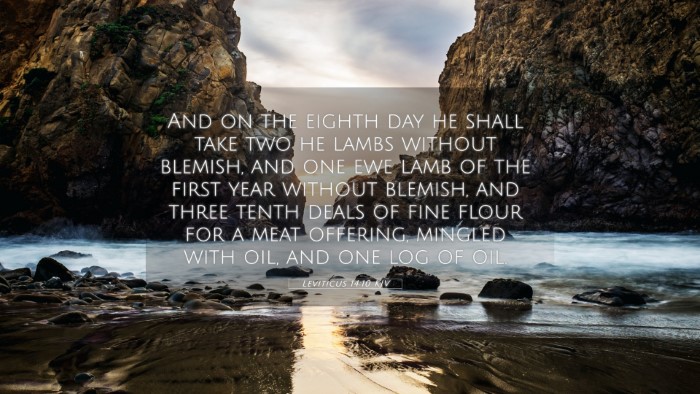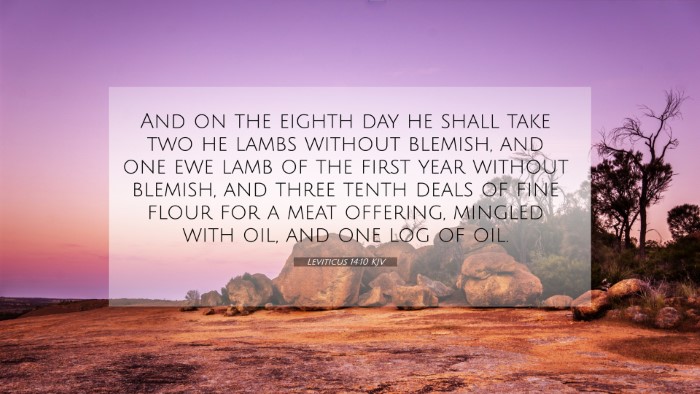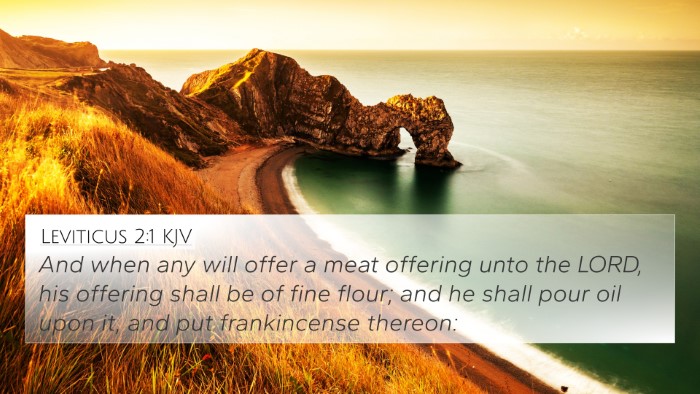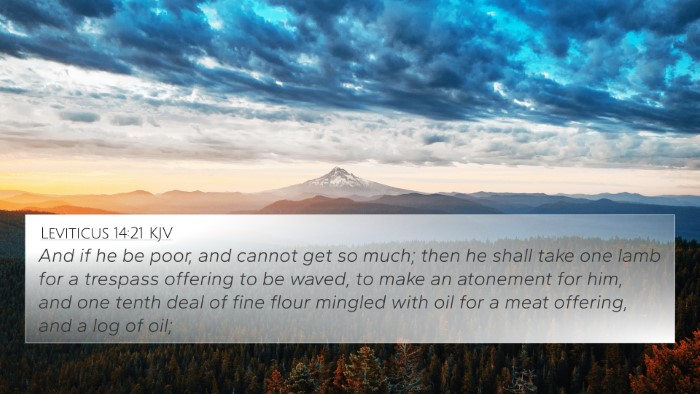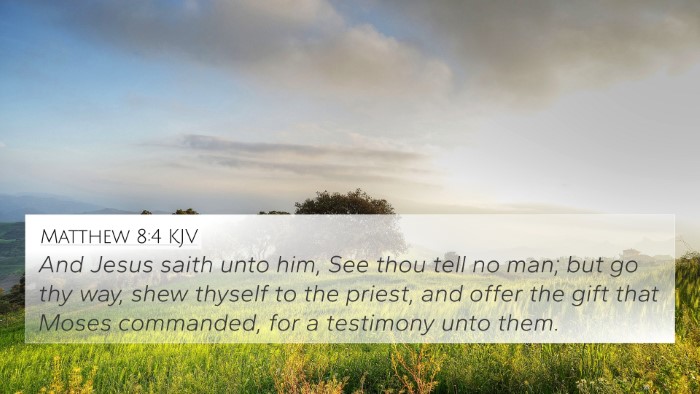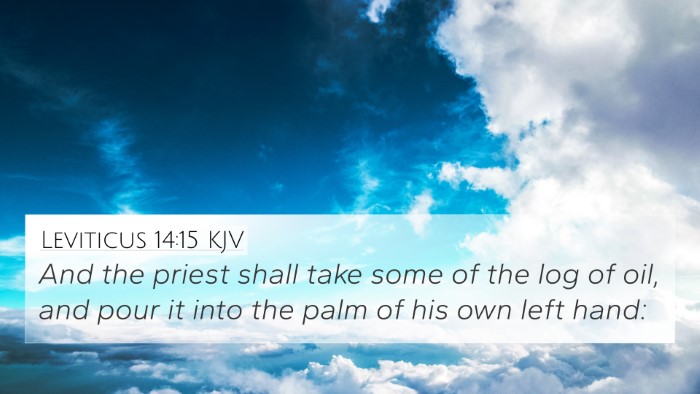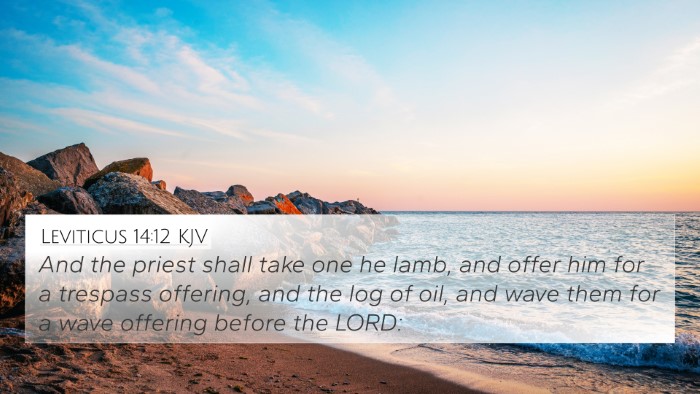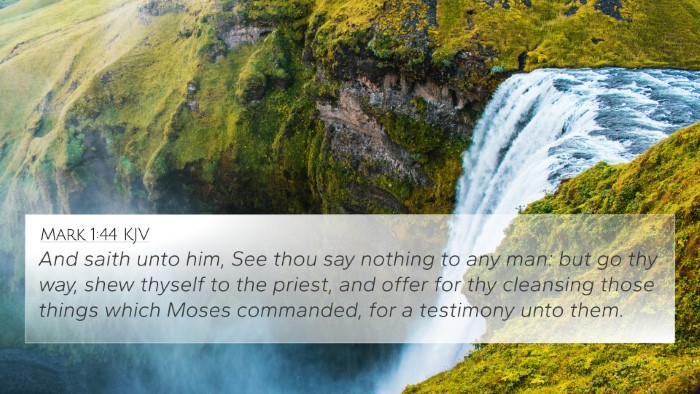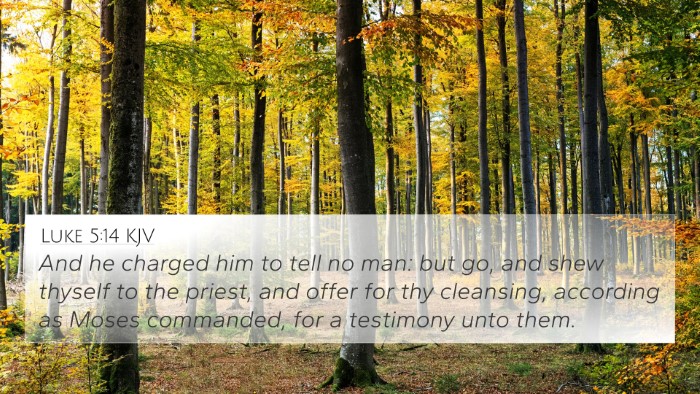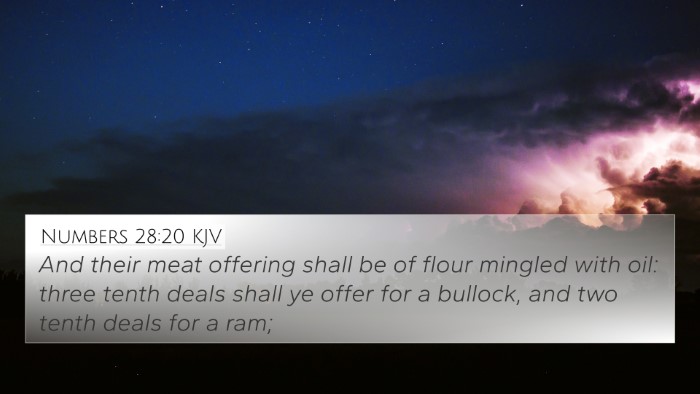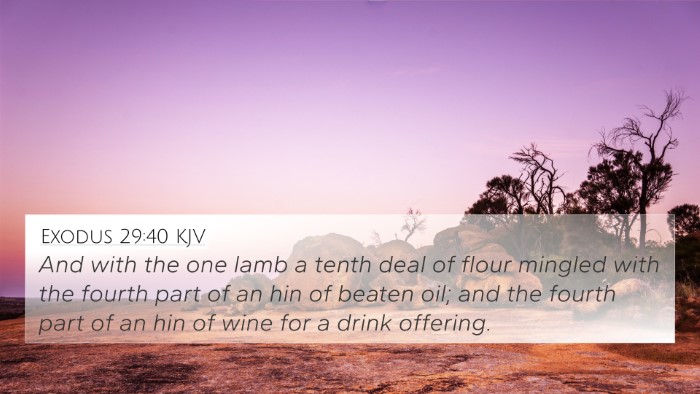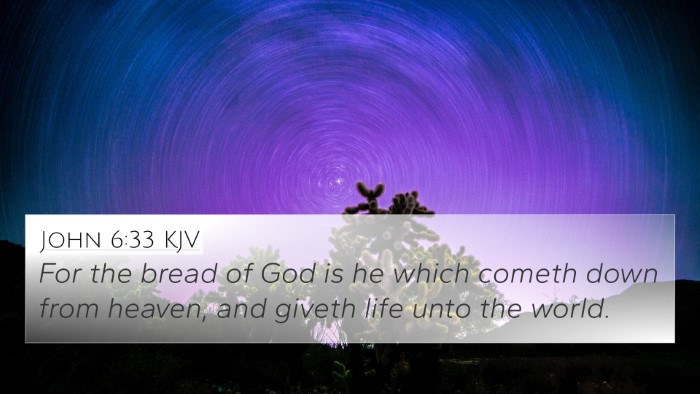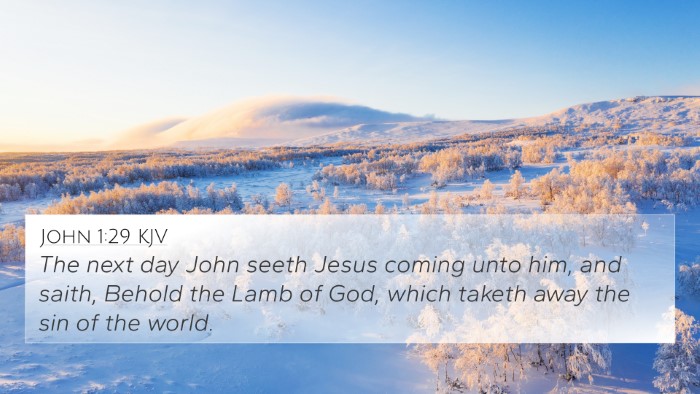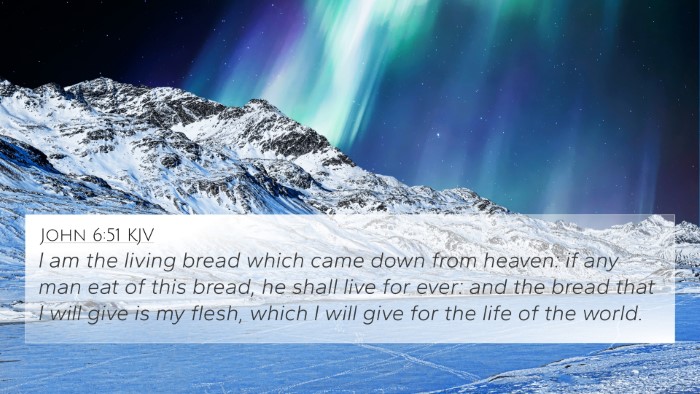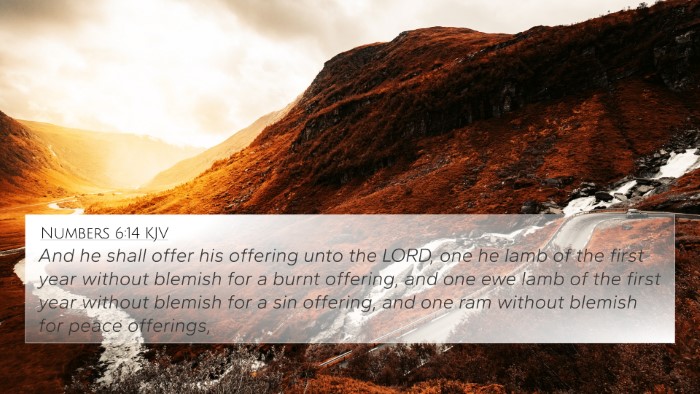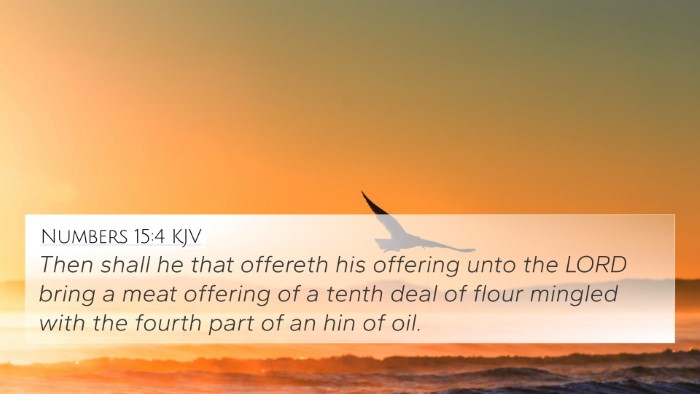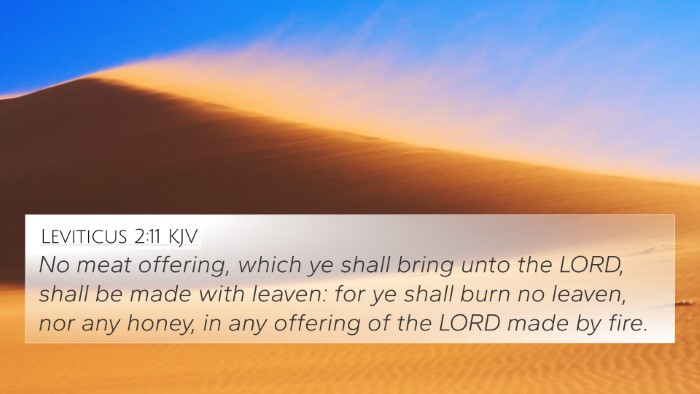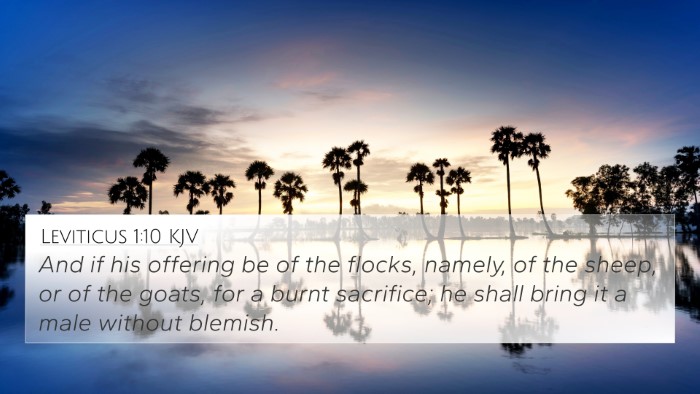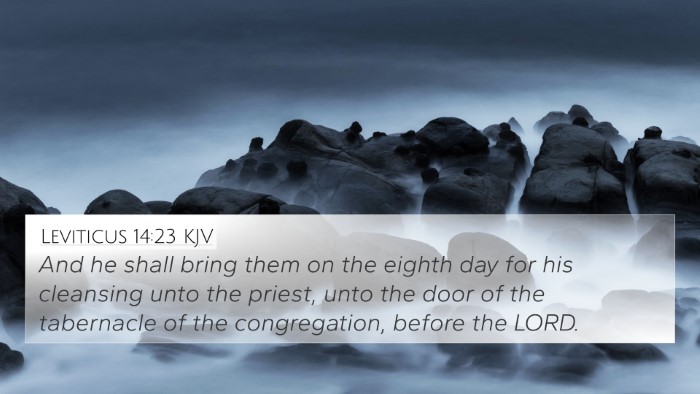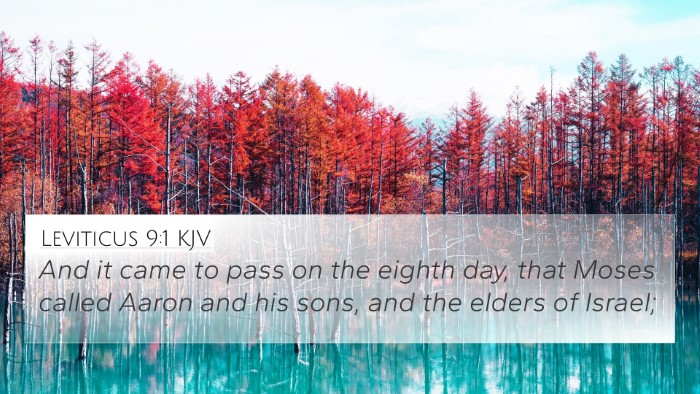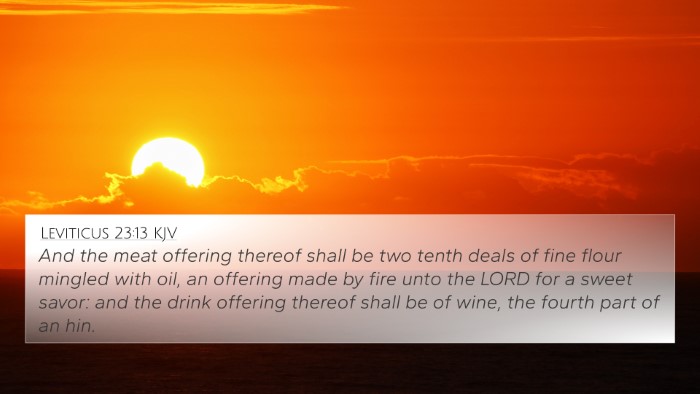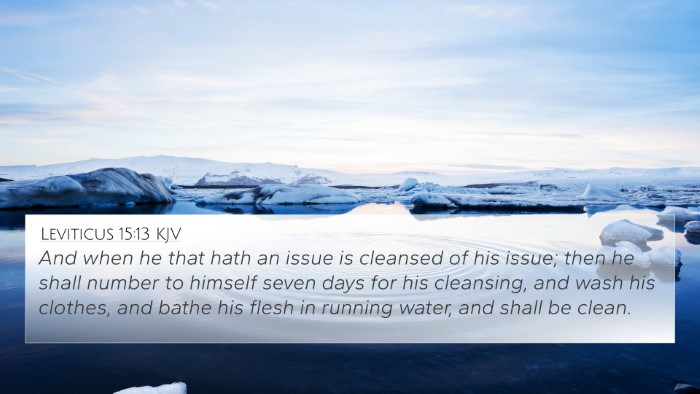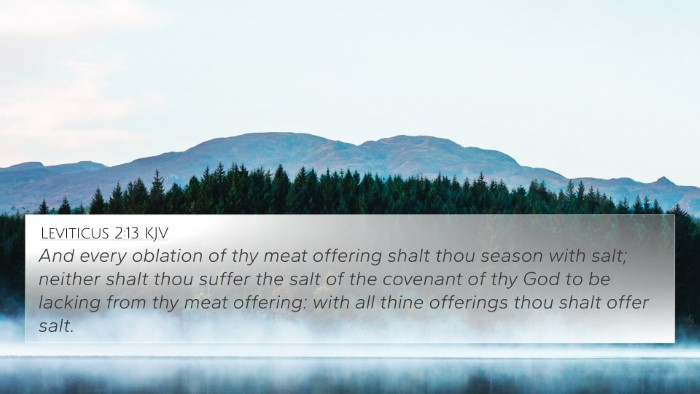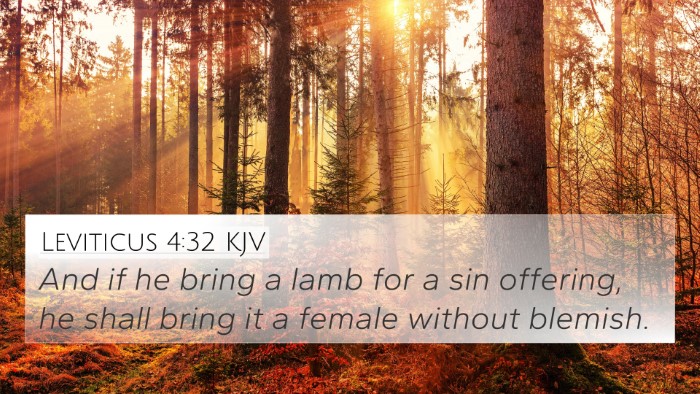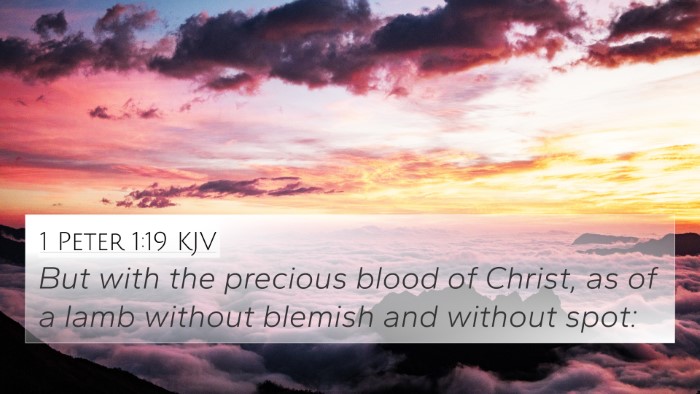Understanding Leviticus 14:10
Leviticus 14:10 (KJV): "And on the eighth day he shall take two he lambs without blemish, and one ewe lamb of the first year without blemish, and three tenth deals of fine flour for a meat offering, mingled with oil, and one log of oil."
Summary of the Verse
This verse is part of the ceremonial laws concerning the cleansing of a leper, a topic that embodies both physical and spiritual significance. It highlights the importance of ritual offerings and the number eight, which signifies new beginnings and a new order in the Hebrew context.
Commentary Insights
Matthew Henry: Henry discusses the details of the offerings required on the eighth day of a leper's cleansing. The coupling of lambs demonstrates the necessity of innocent blood for atonement, showcasing God's mercy towards those considered unclean.
Albert Barnes: Barnes emphasizes the symbolic significance of the "eighth day." The phrase indicates a fresh start, transcending the old state of being unclean. He notes that the offerings serve a dual purpose: they are for both atonement and communion with God.
Adam Clarke: Clarke elaborates on the ritualistic elements of the sacrifices. He mentions that these offerings not only reflect obedience to God's commands but also represent the healing and restoration of the leper back into society, emphasizing the relational aspect of worship.
Significance of the Eighth Day
The number "eight" often symbolizes new beginnings in biblical literature, marking the transition from the old to a new life. It reflects the leper's restoration, both physically and spiritually, providing a deeper understanding of God's restorative power.
Related Bible Verses
- Leviticus 14:2-3: Discusses the procedure for the cleansing of lepers, emphasizing the need for a priest's evaluation.
- Exodus 12:15: Relates to the importance of being clean and ceremonially pure before God, echoing themes of holiness.
- Matthew 8:1-4: Highlights Jesus cleansing a leper, showcasing Him as the fulfillment of the law and a bridge to the New Covenant.
- Hebrews 13:11-13: Discusses the significance of sacrifices in a contemporary context, pointing toward Christ's ultimate sacrifice.
- 1 Peter 2:24: Connects the concept of healing and atonement through Christ’s suffering, aligning with the cleansing rituals.
- Isaiah 53:5: Prophetically reveals the suffering servant who would bear our iniquities, complementing the physical healing referenced in Leviticus.
- Revelation 21:4: Projects a future where there is no more pain or suffering, echoing the themes of restoration found in the laws of cleansing.
- Romans 12:1: Encourages believers to present themselves as living sacrifices, connecting New Testament teachings with Old Testament rituals.
Cross-Referencing Biblical Texts
Leviticus 14:10 provides an excellent opportunity to explore cross-referencing techniques and thematic Bible verse connections. Scholars and believers alike can find value in understanding how Old Testament rituals relate to New Testament revelations.
Applying Cross-Referencing Techniques
For individuals studying the Bible, utilizing cross-reference guides can reveal intricate links between scriptures, enhancing their understanding of key doctrines and themes.
Tools for Bible Cross-Referencing
Utilizing a Bible concordance or a cross-reference Bible study system can aid in identifying connections between Old and New Testament verses. This is especially beneficial when looking for biblical themes such as redemption, sacrifice, and purification.
Concluding Thoughts
The careful study of verses such as Leviticus 14:10 encourages believers to seek a greater understanding of God’s redemptive plan. By engaging in comparative bible verse analysis, one can uncover the beautiful tapestry of scripture revealing God's enduring love and grace for humanity.
Understanding how these laws connect to Christ's work changes the way we view both the Old and New Testaments, inviting us to deepen our relationship with God through a more profound appreciation of His word.

